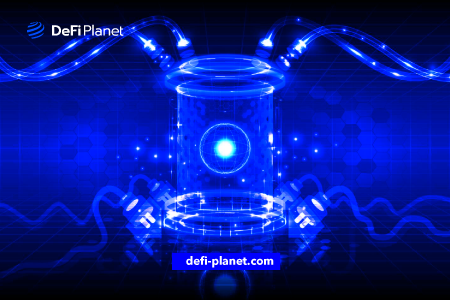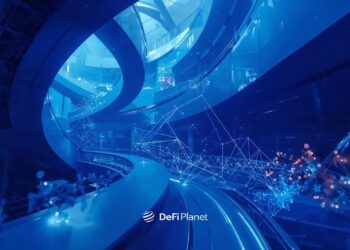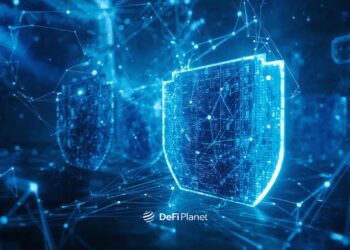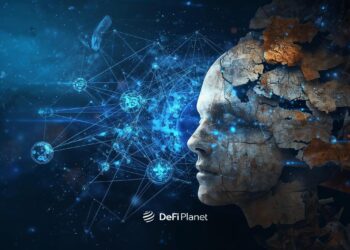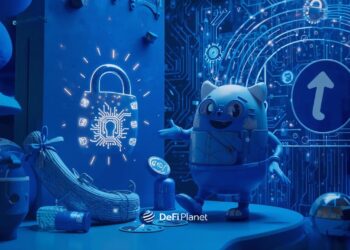Every complex system requires suitable infrastructure (or resources) as well as an underlying architecture. Proof-of-Stake networks require nodes, software implementations, and cloud- or hardware-based systems, much like a power grid, power plants, and pipelines are required to provide electricity to a region.
Platform-as-a-service (PaaS) providers for blockchain infrastructure coordinate and manage access to the infrastructure that drives blockchains (such as developer tools and nodes) as well as the infrastructure that their systems require to run (like cloud storage and security).
This article explores blockchain infrastructure and its application in network operations.
What Is Blockchain Infrastructure?

Blockchain infrastructure is an essential component of blockchain architecture. It refers to the systems or facilities put in place to ensure the success of blockchain technology. Blockchain is much more than just software. Hardware is also involved.
The system requirements for blockchain development are less important than running a node 24 hours a day, seven days a week.
To properly pilot blockchain projects, it is critical to plan for infrastructure resources that will support the initial pilots and lay the groundwork for scaling if and when the pilots are turned into live, competitively crucial production implementations.
As a result, in addition to considering the business implications of emerging blockchain trials, the implications of blockchain for data centre architecture must also be taken into account.
Why Do Blockchains Need Infrastructure?
The word “blockchain” was first used in 1991. A group of researchers sought to develop a technique for time-stamping digital documents so that they couldn’t be modified or backdated. They built the world’s first blockchain ecosystem.
Satoshi Nakamoto adopted and reinvented the blockchain system. In 2008, Nakamoto launched the first cryptocurrency, a blockchain-based project named Bitcoin.
A blockchain is a network of blocks containing specific information (database) that are securely and authentically linked together (peer-to-peer).
In other words, a blockchain is a network of interconnected computers rather than a centralized server, implying that the entire network is decentralized. After learning how to develop a blockchain, it is also necessary to understand its open-source nature.
A Brief Overview of Bitcoin
The domain name bitcoin.org was purchased in 2008, and an academic whitepaper titled “Bitcoin: A Peer-to-Peer Electronic Cash System” was published. It outlined the concept and architecture of a digital money system that is not controlled by any organization, central authority, or government.
According to Satoshi, “The root problem with conventional currencies is all the trust that’s required to make it work. The central bank must be trusted not to debase the currency, but the history of fiat currencies is full of breaches of that trust. ”
The software described in the paper was completed and released the following year. The Bitcoin network went live on January 3, 2009.
Nakamoto worked in collaboration with numerous developers on the project until 2010 when he (or she) withdrew and left it to its own devices. The true identity of Nakamoto has never been established, and they haven’t made any public statements in years.
Blockchain Infrastructure Requirements
A blockchain, a type of distributed ledger, is much more than a new type of software or database. This is why a smart and comprehensive infrastructure is required. This section delves into the blockchain infrastructure’s software and hardware requirements.
Software Requirements
Solidity
This is, without a doubt, one of the most popular languages among blockchain developers. It was created to target the Ethereum Virtual Machine and was influenced by Python, C++, and JavaScript (EVM). Solidity is statically typed and supports inheritance, libraries, and advanced user-defined types.
Solidity supports the most generally used OOP paradigm and CIS for developing smart contracts. Blockchain developers can use Solidity to create apps that can execute self-enforcing business logic contained in smart contracts, resulting in an authoritative transaction record. This is useful for establishing voting contracts, crowdfunding contracts, multi-signature wallets, and blind auctions.
Geth
The Ethereum node implementation was built using the Go programming language. It is offered in three different interfaces: a command-line, a JSON-RPC server, and an interactive console. Geth can be used to develop blockchain applications on Windows, Linux, and Mac.
Geth is used for a variety of functions on the Ethereum blockchain, including token transfers, ether token mining, smart contract creation, and block history exploration. Users can join an existing blockchain or create their own after installing Geth. The good news is that Geth simplifies things by connecting to the Ethereum mainnet automatically.
Remix
Remix IDE is a browser-based blockchain application for developing and deploying smart contracts. Remix, which is written in Javascript (and thus accessible via any modern browser), can be used to author, test, debug, and deploy Solidity smart contracts. It can be used locally or in a browser.
Remix has excellent documentation and can easily connect to the Ethereum blockchain via Metamask.
Metamask
Metamask is a wallet that links the Ethereum blockchain and a browser (Firefox or Chrome). It essentially functions as a browser extension. Metamask provides a software framework for serving Ether and other ERC-20 assets as well as interacting with Ethereum Dapps.
Shapeshift, and Coinbase also support the sale and purchase of ETH and ERC-20 tokens. Metamask can also be used to store ether keys and ERC-20 tokens. It is ideal for blockchain developers because it is capable of interfacing with different Ethereum test networks. After installing the program, users can easily have an Ethereum wallet built into their browsers.
Other software requirements include mist, solc, ganache, truffle, blockchain-as-a-service, and blockchain testnet.
Hardware Requirements
CPU
A CPU can be considered the system’s brain. It handles high-level activities that affect the entire computer. A fast CPU means increased performance, which translates to faster task completion.
For decades, this was the standard (and it is still the standard today). However, blockchain technology is fundamentally altering how we think about computing power, particularly in terms of latency and real-time transactions.
GPUs
Graphics processing units (GPU), also called graphics cards, are specialized for handling computer display functions such as video rendering.
A GPU is designed to perform a large number of calculations quickly, which means it can perform more calculations per second. However, the calculations must not be overly complex.
Nodes and Clients
Nodes are critical components of the Proof-of-Stake infrastructure. A node is a computer that performs network-critical services such as transaction validation, blockchain record keeping, blockchain data storage, and network governance voting. A client is a program that controls how these fundamental functions are performed.
Clusters
The term “cluster” refers to a network-specific node (or collection of nodes) and the infrastructure that supports it, such as load-balancing tools, monitoring, and alerting systems.
How to Participate in Blockchain Infrastructure
Large Token Holder
Those who have a large number of native tokens for a Proof-of-Stake network can set up their first node using Coinbase Cloud. They can strengthen their networks and earn participation rewards by assisting in securing one of the more than 20 networks supported by Coinbase.
Since Coinbase Cloud is noncustodial, participants can keep ownership of their digital assets while Coinbase manages the participants’ infrastructure with 24/7 monitoring and industry-leading engineering response times.
Minor Token Holder
Those who do not have enough tokens to run their node can delegate (or stake) their tokens to Coinbase Cloud’s public validators and be rewarded with participation incentives while helping to secure these networks.
In most protocols, no minimum number of tokens is required to delegate to an operational validator node. As a result, even people with few digital assets can participate in a network through delegation.
When the risks and trade-offs are considered, delegation can be a way for token holders to support and participate in blockchain networks while earning more digital assets.
Institution
Technological and regulatory breakthroughs are hastening the institutional adoption of cryptocurrency. Proof-of-Stake blockchains are becoming increasingly popular. Currently, they power more than $200 billion worth of assets, providing institutions with a new opportunity to grow and offer more value-added services to their clients.
The in-house development and maintenance of blockchain infrastructure is expensive and time-consuming. The Coinbase Cloud can provide non-native businesses with the tools needed to participate in Proof-of-Stake networks.
Coinbase Cloud allows participants to offer and grow their services faster and for less money while still meeting the participants’ requirements for security and reliability.
In Conclusion,
- Blockchain infrastructures are the components or systems that enable platforms built using blockchain technology to function.
- Customers can gain direct access to blockchain infrastructure providers, for example, if they operate data centres, implement security measures, and maintain servers.
- Access to these services is set up and maintained by a blockchain infrastructure platform-as-a-service provider. They also provide the code to build on, the platform on which they are accessed, development tools, container services, metrics and analytics, and community support.
If you would like to read more articles like this, visit DeFi Planet and follow us on Twitter, LinkedIn, Facebook, and Instagram.
“Take control of your crypto portfolio with MARKETS PRO, DeFi Planet’s suite of analytics tools.”

